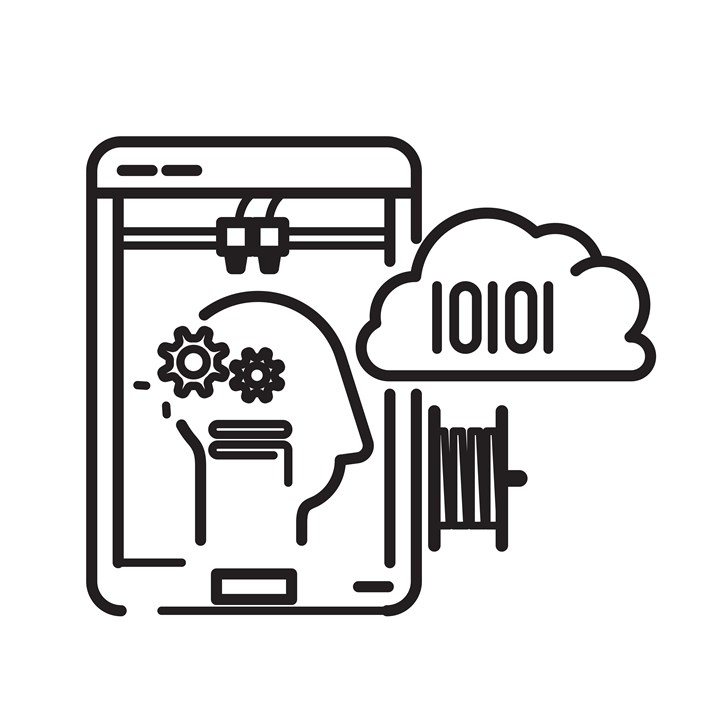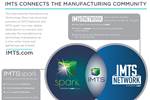What's the Big Idea in Additive Manufacturing?
A new series presented by Additive Manufacturing Media tackles important themes AM is touching that promise to change manufacturing in a big way.
 Big Ideas in Additive Manufacturing will feature the editors of Additive Manufacturing magazine talking through important themes AM is touching that promise to change manufacturing in a big way. Register and find more information at IMTS.com/spark, then add each show to your My Spark Planner.
Big Ideas in Additive Manufacturing will feature the editors of Additive Manufacturing magazine talking through important themes AM is touching that promise to change manufacturing in a big way. Register and find more information at IMTS.com/spark, then add each show to your My Spark Planner.Those of us who use or write about additive manufacturing (AM) are often so close to the topic that it can be hard to appreciate its evolution — not just as a set of technologies, but also toward becoming a commonly used mode of production.
When we get too close to a topic in this way, sometimes the best thing to do is step back and seek out a broader perspective. So, beginning this month, the editors at Additive Manufacturing Magazine are going to do just that.
In a limited series through the IMTS spark network, Pete Zelinski, Stephanie Hendrixson and I (bio here) will spotlight important themes related to AM that promise to change manufacturing in a big way.
The series, called “Big Ideas in Additive Manufacturing,” begins on November 30 with a deep dive into additive manufacturing’s unrivaled power at providing tooling for conventional production. We’ll walk through examples of how 3D-printed tooling — parts such as assembly fixtures, mold cores, cavities and inserts, end effectors and workholding devices — are not only crucial to production across several industrial sectors, but also represent the way that many companies are introduced to AM. While the immediate cost and lead-time savings that 3D-printed tooling provides to companies are important to bottom lines, they also help change mindsets and cultures at companies that have no experience with AM.
Then, on January 6, we’ll switch gears to focus on metal 3D printing — an established mode of making metal parts that is succeeding in new applications each day. We’ll talk about the state of metal AM today, including challenges related to capital costs and technological complexities, as well as the benefits that are inherent to metal AM such as design freedoms and the consolidation of parts. We’ll also dig into the latest metal 3D printing technologies, including binder jetting, wire arc AM, ultrasonic AM and metal material extrusion, and talk about where these technologies are gaining a foothold as go-to methods of production.
And finally, on February 1, we’ll wrap things up by surveying the frontiers of manufacturing — the extreme applications of additive manufacturing that go well beyond what any other production process could deliver. 3D-printed machine tools? Metal AM parts on Mars? Large-scale concrete printers that can automate building construction? We’ll examine the ways in which scientists and engineers are pushing AM to its limits.
This series and other programming on IMTS spark run through early 2021, and registration is free. Visit IMTS.com/spark to register, find supplier showrooms and networking opportunities and to check out the agenda.
Related Content
-
Mantle: 3D Printed Molds Address Plastics Industry Lead Time and Skills Shortage
Company now shipping production systems. Steel mold tooling from its TrueShape process can be printed, shaped and sintered in days, and with fewer steps, compared to weeks of lead time for molds made conventionally.
-
Foundry Lab: How Casting in a Day Will Improve the Design of Metal Parts (Includes Video)
The company’s digital casting process uses 3D printing, but the result is a cast part. By providing a casting faster than a foundry, the company says effective prototyping is now possible for cast parts, as well as bridge production.
-
In "Hybrid" FIM Process, 3D Printing Complements Injection Molding
In a recent case study, Alpine Advanced Materials partnered with Nexa3D to produce 3D printed tooling for injection molded composites. Utilizing Nexa3D’s XiP desktop 3D printer and its Freeform Injection Molding process, Alpine was able to reduce prototype tooling production time and cost alike for its customers.















